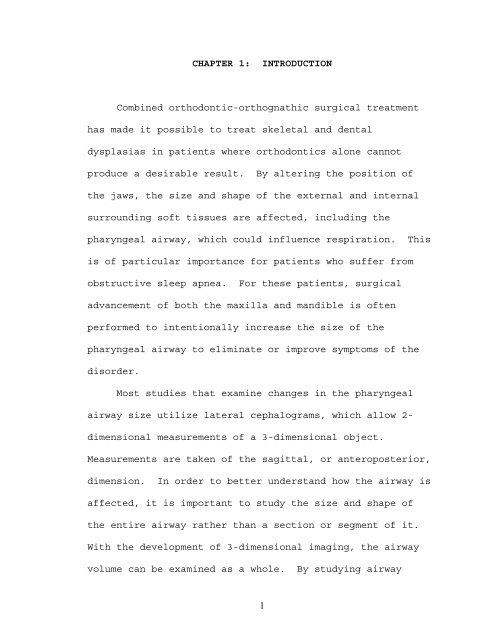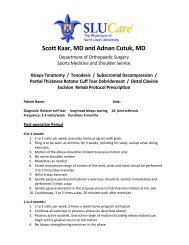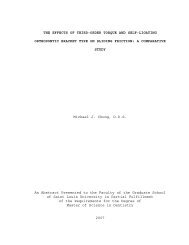PHARYNGEAL AIRWAY VOLUME FOLLOWING ...
PHARYNGEAL AIRWAY VOLUME FOLLOWING ...
PHARYNGEAL AIRWAY VOLUME FOLLOWING ...
Create successful ePaper yourself
Turn your PDF publications into a flip-book with our unique Google optimized e-Paper software.
CHAPTER 1: INTRODUCTION<br />
Combined orthodontic-orthognathic surgical treatment<br />
has made it possible to treat skeletal and dental<br />
dysplasias in patients where orthodontics alone cannot<br />
produce a desirable result. By altering the position of<br />
the jaws, the size and shape of the external and internal<br />
surrounding soft tissues are affected, including the<br />
pharyngeal airway, which could influence respiration. This<br />
is of particular importance for patients who suffer from<br />
obstructive sleep apnea. For these patients, surgical<br />
advancement of both the maxilla and mandible is often<br />
performed to intentionally increase the size of the<br />
pharyngeal airway to eliminate or improve symptoms of the<br />
disorder.<br />
Most studies that examine changes in the pharyngeal<br />
airway size utilize lateral cephalograms, which allow 2-<br />
dimensional measurements of a 3-dimensional object.<br />
Measurements are taken of the sagittal, or anteroposterior,<br />
dimension. In order to better understand how the airway is<br />
affected, it is important to study the size and shape of<br />
the entire airway rather than a section or segment of it.<br />
With the development of 3-dimensional imaging, the airway<br />
volume can be examined as a whole. By studying airway<br />
1

















